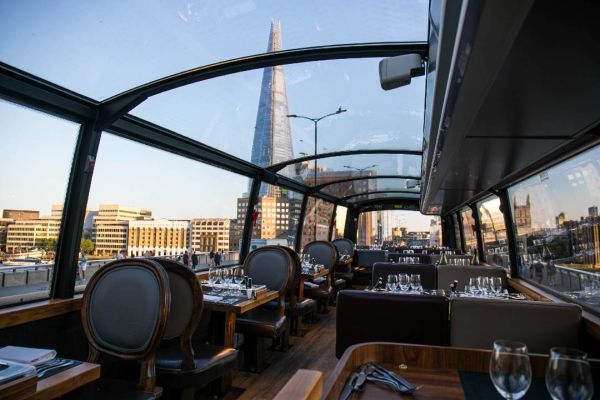THE HIGHLIGHTS AT St Paul’s Cathedral
From royal weddings and state funerals to famous burials and more, St Paul's Cathedral has played a major role in London's history.
Situated near the River Thames, St Paul’s Cathedral is one of the capital’s most iconic buildings. Designed by Britain’s famed architect Sir Christopher Wren as part of the major rebuilding of the City after the 1666 Great Fire of London, the present St Paul’s Cathedral was built between 1675 and 1710 and is one of London’s most popular places of interest.
Sitting on the highest point of the City of London, St Paul’s Cathedral has frequently been at the centre of national events through history from its consecration and surviving the Blitz to state funerals, royal weddings and more. Step inside and discover the Cathedral’s spectacular interiors, architectural design and breathtaking panoramic views across London from the Stone and Golden Galleries.
London Pass holders can enjoy fast-track entry to St Paul's Cathedral as well as 10% discount on purchases £5 and more in the St Paul's shop.
Please check our Closures & Notices page for the latest closures and changes to opening hours.

St Paul’s Cathedral Highlights
Queen Victoria’s Diamond Jubilee memorial marker.
The Fire Watch Memorial.
The painting with ‘celebrity status.
The man who ‘lost America’
The effigy of John Donne
A hidden space rocket
The Victorian Mosaics
Wren’s resting place
Nelson’s ‘second hand’ sarcophagus
St Paul’s Cathedral Facts
St Paul’s Cathedral is Sir Christopher Wren’s masterpiece.
he considered this to be his finest work.
St Paul’s is 365 feet high (111m), a foot for every day of the year and there are 528 steps that will take you to the top of the dome.
Around 250 steps will take you to the Whispering Gallery, famous for its wonderful acoustics.
St Paul’s Cathedral History
The Nave
The Cathedral’s Nave provides a stunning view of the full length of the Cathedral, leading down to the Dome. Here you will also find a monument to one of Britain’s greatest historical figures, the Duke of Wellington. Completed in 1912, it depicts the duke sitting on horseback and is the cathedral’s largest monument.
The Dome
Inspired by St Peter’s Basilica in Vatican City, St Paul’s Dome is the second-largest cathedral dome in the world. Its painted interiors by Sir James Thornhill show eight scenes from the life of St Paul and is a truly stunning sight. You can climb 376 steps to the Stone Gallery and a further 152 to the Golden Gallery, both on the outside of the Dome. You’re welcome to take photos of these galleries.
The Whispering Gallery (Please note that the Whispering Gallery will be closed until December 2019)
One of the best-known features of the Cathedral because of its acoustic properties, the Whispering Gallery circles the interior of the vast dome, 30 metres above the Cathedral Floor. If you whisper against the wall at any point, you can be heard by anyone with their ear against the wall at any other point around the gallery, even on the other side.
The High Altar
Made of marble and carved and gilded oak, the current altar replaced a Victorian marble altar which was damaged during the Second World War due to a bomb strike that destroyed a large part of the east end of the Cathedral.
The Grand Organ
Built and installed in 1695, the Grand Organ is one of the Cathedral’s greatest artefacts after undergoing several restorations over the centuries. It has 7189 pipes, five keyboards, and 138 organ stops.
The Crypt
Extending the entire length of the building, there are over 200 monuments and memorials in St Paul’s Crypt. Discover the tombs of historical British figures such as Admiral Lord Nelson, Arthur Wellesley Duke of Wellington, scientist Alexander Fleming and the architect of St Paul’s Sir Christopher Wren.











